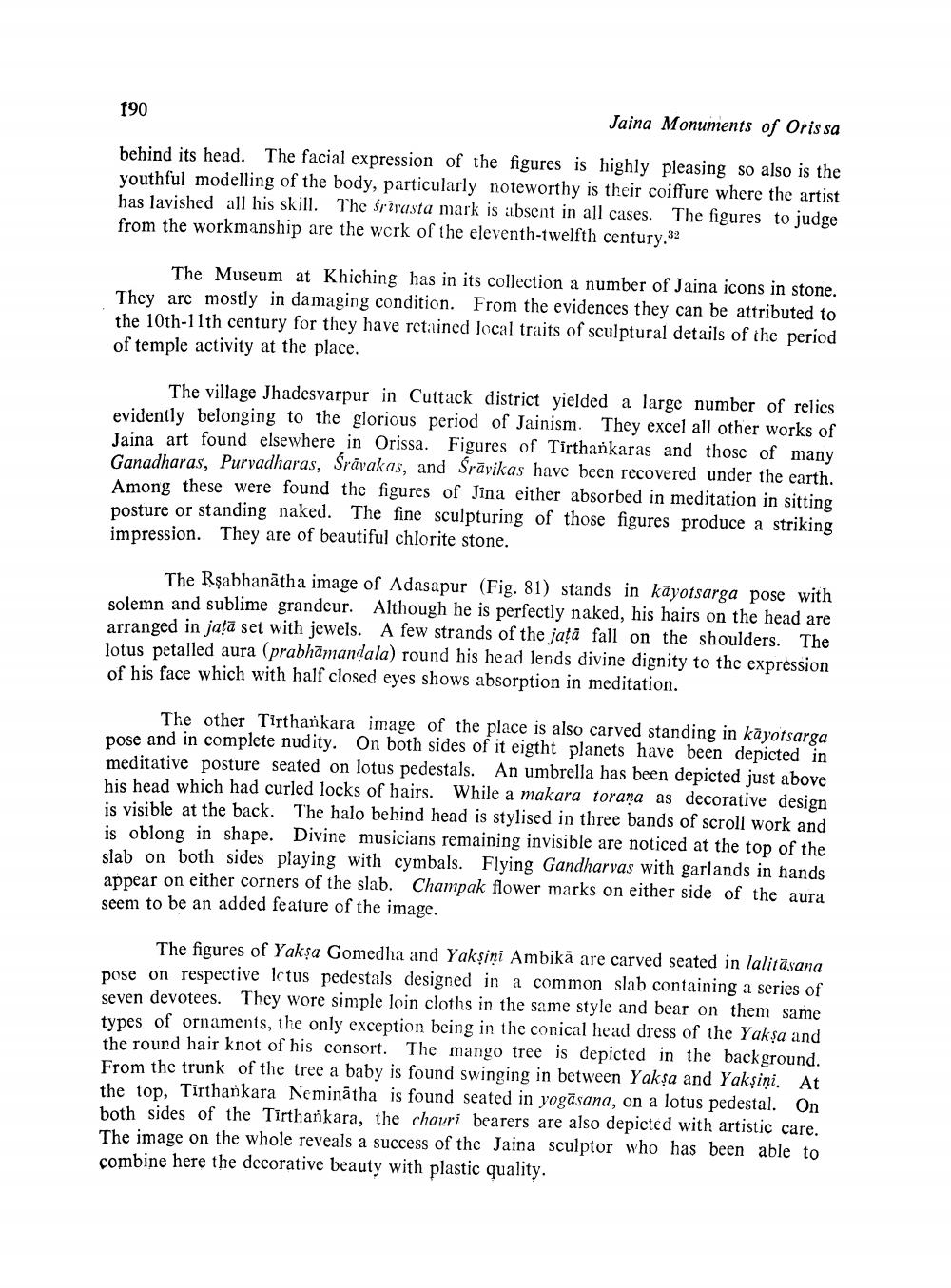________________
Jaina Monuments of Orissa
behind its head. The facial expression of the figures is highly pleasing so also is the youthful modelling of the body, particularly noteworthy is their coiffure where the artist has lavished all his skill. The śrivasta mark is absent in all cases. The figures to judge from the workmanship are the work of the eleventh-twelfth century,
190
The Museum at Khiching has in its collection a number of Jaina icons in stone. They are mostly in damaging condition. From the evidences they can be attributed to the 10th-11th century for they have retained local traits of sculptural details of the period of temple activity at the place.
The village Jhadesvarpur in Cuttack district yielded a large number of relics. evidently belonging to the glorious period of Jainism. They excel all other works of Jaina art found elsewhere in Orissa. Figures of Tirthankaras and those of many Ganadharas, Purvadharas, Sravakas, and Sravikas have been recovered under the earth. Among these were found the figures of Jina either absorbed in meditation in sitting posture or standing naked. The fine sculpturing of those figures produce a striking impression. They are of beautiful chlorite stone.
The Rṣabhanatha image of Adasapur (Fig. 81) stands in kayotsarga pose with solemn and sublime grandeur. Although he is perfectly naked, his hairs on the head are arranged in jafa set with jewels. A few strands of the jata fall on the shoulders. The lotus petalled aura (prabhamandala) round his head lends divine dignity to the expression of his face which with half closed eyes shows absorption in meditation.
The other Tirthankara image of the place is also carved standing in kayotsarga pose and in complete nudity. On both sides of it eigtht planets have been depicted in meditative posture seated on lotus pedestals. An umbrella has been depicted just above his head which had curled locks of hairs. While a makara torana as decorative design is visible at the back. The halo behind head is stylised in three bands of scroll work and is oblong in shape. Divine musicians remaining invisible are noticed at the top of the slab on both sides playing with cymbals. Flying Gandharvas with garlands in hands appear on either corners of the slab. Champak flower marks on either side of the aura seem to be an added feature of the image.
The figures of Yakşa Gomedha and Yakşini Ambika are carved seated in lalitasana pose on respective Ictus pedestals designed in a common slab containing a series of seven devotees. They wore simple loin cloths in the same style and bear on them same types of ornaments, the only exception being in the conical head dress of the Yaksa and the round hair knot of his consort. The mango tree is depicted in the background. From the trunk of the tree a baby is found swinging in between Yakta and Yakşini. At the top, Tirthankara Neminatha is found seated in yogasana, on a lotus pedestal. On both sides of the Tirthankara, the chauri bearers are also depicted with artistic care. The image on the whole reveals a success of the Jaina sculptor who has been able to combine here the decorative beauty with plastic quality.




